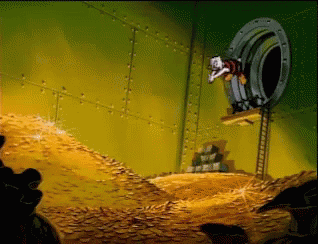Four years ago, digital media went on life support. Media pundits and industry experts blamed all sorts of causes: the Fooglebook duopoly, “fake news,” frothy VC valuations, misguided pivots to video, and, of course, politics depriving our collective brains of oxygen.
These ingredients cooked up a liquidity crisis in digital media. For four years running, layoffs and shutdowns outnumbered up rounds and exits. Remember that Buzzfeed IPO that Jonah Peretti teased in 2015, then kicked down the road?
Instead of a golden era of IPO glory, the next few years were a shitshow, and I had a front row seat. I launched Inverse in 2015, just as the froth fizzled. We raised VC money on a business plan requiring more capital to grow. When liquidity went dry, we scaled back and revised our strategy. But with limited runway, I knew we needed to ditch indie life and sign with a major label. So in 2019, I sold the company to Bustle Digital Group. BDG survived and thrived during the low O2 years, thanks to their acquisition strategy and strong balance sheet.
With oxygen to burn in 2021, digital media is hot again. And liquidity is back, baby!
In the late teens, even the largest and most successful digital media companies had no realistic exit options. The big acquirers, traditional media and publishing companies, had their own issues and weren’t buying. And the IPO window that Jonah saw crack open in 2015 slammed back shut.
Without viable paths to liquidity, private investors stopped writing checks. Media startups prioritized profit over growth. Fall after fall, though, missed numbers led to more belt-tightening, layoffs, and gloomier forecasts.
Nearly every media startup outside the top tier hit a wall without new funding. They scaled back, shut down, or were sold for stock. Such was the fate of Refinery29, Mic, Mashable, and yours truly with Inverse.
When we reflect on [life’s] struggle, we may console ourselves with the full belief, that the war of nature is not incessant, that no fear is felt, that death is generally prompt, and that the vigorous, the healthy, and the happy survive and multiply. – Charles Darwin, On the Origin of Species
It’s a simple rule: when resources become scarce, adapt or die. Such was the case in media these last few years, as a few more nimble companies innovated new models to generate liquidity without the need for massive funding. Barstool Sports and Food52 monetized their audiences directly on the way to solid exits. Morning Brew and The Hustle built profitable businesses on meager funding by obsessing over email. And an explosion of new creator platforms like Substack, ConvertKit, and Patreon enabled anyone with an audience to spin up a money-making media operation from scratch.
Now, a what’s-old-is-new-again financial vehicle called the SPAC promises to bring liquidity back to digital media. Whether that promise will be fulfilled, only time will tell. But the conditions look better now than they have in several years.
Here’s what you need to know about SPACs, courtesy of Investopedia:
- A special purpose acquisition company (SPAC), also known as a “blank check company”, is a company with no commercial operations that is formed strictly to raise capital through an initial public offering (IPO) for the purpose of acquiring an existing company.
- SPACs offer private companies a short-cut to going public, usually a rigorous process with huge regulatory hurdles.
- The SPAC structure has existed for decades, but was relatively rare until last year. There were more SPAC IPOs in 2020 than the previous ten years combined, and 2021 is off to a faster pace.
If the traditional IPO didn’t work for digital media, why will the SPAC? For one, the private markets have undervalued digital media assets, which has led to less funding and lower growth for the survivors. On the flip side, they’ve all strengthened their balance sheets through smart acquisitions and better financial management. While profits don’t mean much to VCs, they’re like crack to public investors.
The growth story for media SPACs will come via consolidation. Media companies can achieve significant economies of scale via acquisition. (If you’re thinking of the AOL-TimeWarner disaster, it’s the exception that confirms the rule.)
So here’s the model:
- Liquidity-starved digital media companies go public via SPAC.
- They raise cash to fund growth through acquisitions of other complementary media assets and, by doing so;
- Open the spigots for even more liquidity.
See Group Nine Media, for starters. They already planted their flag with a SPAC to fund acquisitions. Insiders say they may eventually merge with Buzzfeed, fulfilling Jonah’s years-long quest to go public. BDG, my current employer and Inverse’s acquirer, is also in the SPAC mix. I do not, of course, have much else to say about that for the moment.

Here’s a nice coincidence: the aforementioned creator economy is experiencing a liquidity boom of its own. Today’s top creators can amass Scrooge McDuck-sized money piles by monetizing their audiences, while VCs fall all over themselves to fund new platforms and empower even more creators.
We spent several years saying that social media was saturated and no longer a high-growth investment.
— Web Smith (@web) January 23, 2021
Then, it was rebranded as the "creator economy" (h/t @ljin18) and users were branded "content creators" and its back to 10-figure Series B valuations.
Let the good times roll.
Some of these creators will become media moguls in their own right. And some creator-born media companies will grow big enough to attract M&A interest from newly public digital media companies, or even go public via SPAC themselves.
TLDR: after several years of mostly doom and gloom and all-stock acquisitions, the digital media space is finally interesting again.
Of course, the media SPACs could be DOA. Que sera, sera. But the big lesson from 2021’s financial markets is a marketing lesson: great stories matter. And who better to tell a great story than the media?



